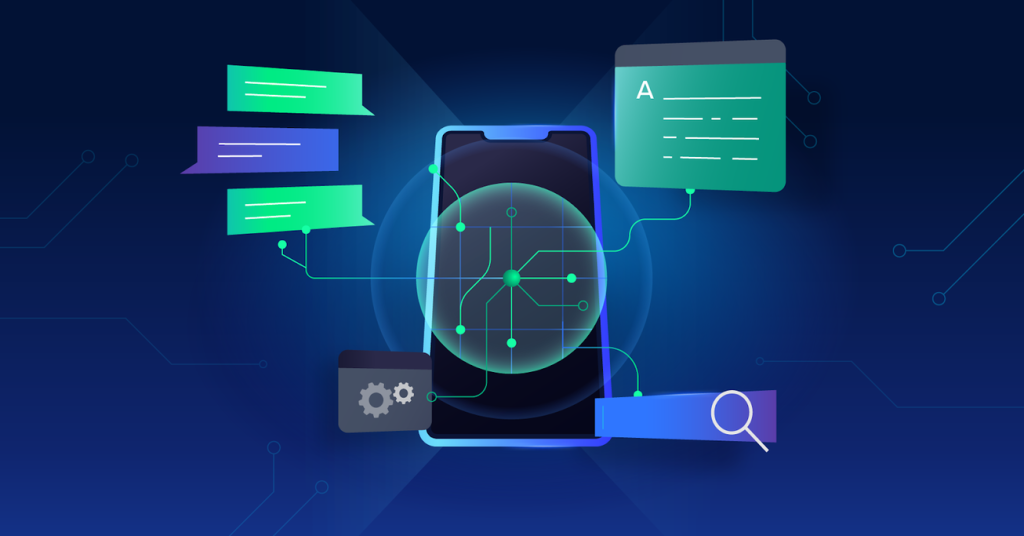The rapid growth and adoption of artificial intelligence (AI) is happening at a remarkable pace. Meta, Amazon, Alphabet and Microsoft plan to invest more than $350 billion in 2025 to build and equip AI data centers. According to Dealroom, in 2024, AI startups raised $114 billion. Yet, based on a recent MIT report, The GenAI Divide: State of AI in Business 2025, 95% of AI implementations fail. Their findings show that AI integration often fails to contribute to profits “due to brittle workflows, lack of contextual learning, and misalignment with day-to-day operations.” It also found that most agentics-based systems are not capable enough to handle rigid enterprise system workflows.
Just about every software company is looking for ways to integrate AI engines into their products. Companies are adopting AI to automate routine tasks, improve decision-making and create new products and services. So far, companies have mostly focused on augmenting office applications like spreadsheets, word processing and presentations – using out of the box AI agents. Perhaps the greatest potential upside for AI integration lies in improving enterprise software systems to truly improve corporate productivity.

Enterprise software systems like ERPs, SCMs, CRMs and HRMs, to name a few, are powerful engines, but suffer from rigidity. By rigidity we mean the difficulty and high cost associated with changing or adapting enterprise software systems to meet new or required operational workflows. These systems are often designed with complex, tightly coupled code that makes even minor modifications a significant task. Given the exploding number of corner cases in enterprise environments this rigidity hinders a business’s ability to effectively increase efficiency, automate tasks, improve decision-making or keep employees happy.
Difficulty in capturing new data sets, and increasing the granularity of that data, demonstrates just one way that rigidity impacts enterprise software system usefulness and performance. The need to perform a string of complex repetitive tasks more efficiently is another. ERPs often require complex queries or multiple screens for employees and managers to access the information they need. Additionally, many ERPs and other enterprise software systems don’t work seamlessly with tailored bolt-on solutions, leaving data inaccessible or difficult to include into enterprise-wide reports.
In order to achieve success there are hurdles to overcome. Based on the MIT report, a successful AI universal UI would be able to guide the user through robust day-to-day workflows, learn within the context of tasks being performed and be able to autonomously carry out defined activities once told to do so by an authorized user.
The AI-Powered Universal User Interface – Democratizing Data
With the arrival of AI engines and their associated tools, the promise to leverage them as an AI-powered universal UI can deliver unprecedented levels of flexibility for ERPs and other enterprise software systems. AI systems can be leveraged to create a user-friendly wrapper around the enterprise data and act as a single, flexible universal interface that can handle many corner cases and adapt dynamically to changing business needs.
New kinds of data, and levels of data granularity, can be captured – and put through the ERP dataset, while maintaining business and security rules. Employees can use forms created on the fly, drop down boxes and other ways to put data into the system – and it will appear seamlessly – with the look and feel of the current systems. This will cut down on employee work arounds and data being stored in spreadsheets or paper.
Leveraging an AI-powered universal UI means that employees and executives can access the right information at the right time, making further exploration easy. This facilitates quicker, smarter decisions, and sparks innovation. The AI-powered universal UI will deliver true data democratization.
The AI-Powered Universal User Interface – Democratizing Access to Complex Data and Capabilities
Leveraging an AI-powered universal UI can also democratize access to complex data and capabilities. An employee without a data science background can run sophisticated analyses by simply asking a question in plain English. This leads to higher user adoption and significant productivity gains.
The integration of AI and Natural Language Processing (NLP) in the AI-powered universal user interface can fundamentally transform the value of ERP systems. The new AI-system driven UI can also simplify complex tasks and make the software more intuitive. It transforms ERPs from a complex, menu-driven tools-based system to a more intuitive, conversational and intelligent platform. The ability to instantly query vast datasets and receive clear, actionable insights in a natural format makes data-driven decisions accessible to more people within the organization, especially executives
The AI-Powered Universal User Interface – Bridging the Gap with Third-Party Tools and Enterprise Systems
The use of an AI-powered universal user interface as the new UI is a powerful strategy for bridging the gap between different enterprise software systems. A typical business uses many specialized applications – from ERP and CRM to SCM and HRM systems, among others. Each system can have numerous bolt-on tools that are partially integrated, adding to the complexity. These systems often operate in silos, requiring employees to learn and navigate multiple complex interfaces, leading to inefficiencies, data inconsistencies, a fragmented user experience and widely disseminated data.
An AI-powered universal user interface (UI) will address this by acting as a universal, intelligent layer that sits on top of these platforms and datasets. Instead of a user having to switch between applications, they can interact with a single, conversational interface that understands their intent and manages the necessary actions across the backend systems.
While it may seem that the ability to leverage AI to power a new enterprise system UI will be years in coming, the first steps towards a truly universal interface will be available soon. The AI-powered universal UI will be the new AI killer app for enterprises. In fact, AI-augmentation is the most effective method for ERP transformation – and other enterprise software system transformations – in terms of costs, downtime, training and implementation costs, among many other factors.
Ken Fischer
Ken Fischer is the CEO of Atigro, the proven ERP transformation firm that pairs its modular augmentation capabilities with AI-native frameworks. Atigro’s experience and capabilities generate the rapid development and provisioning of new ERP functionality that meets dynamically changing business processes.




